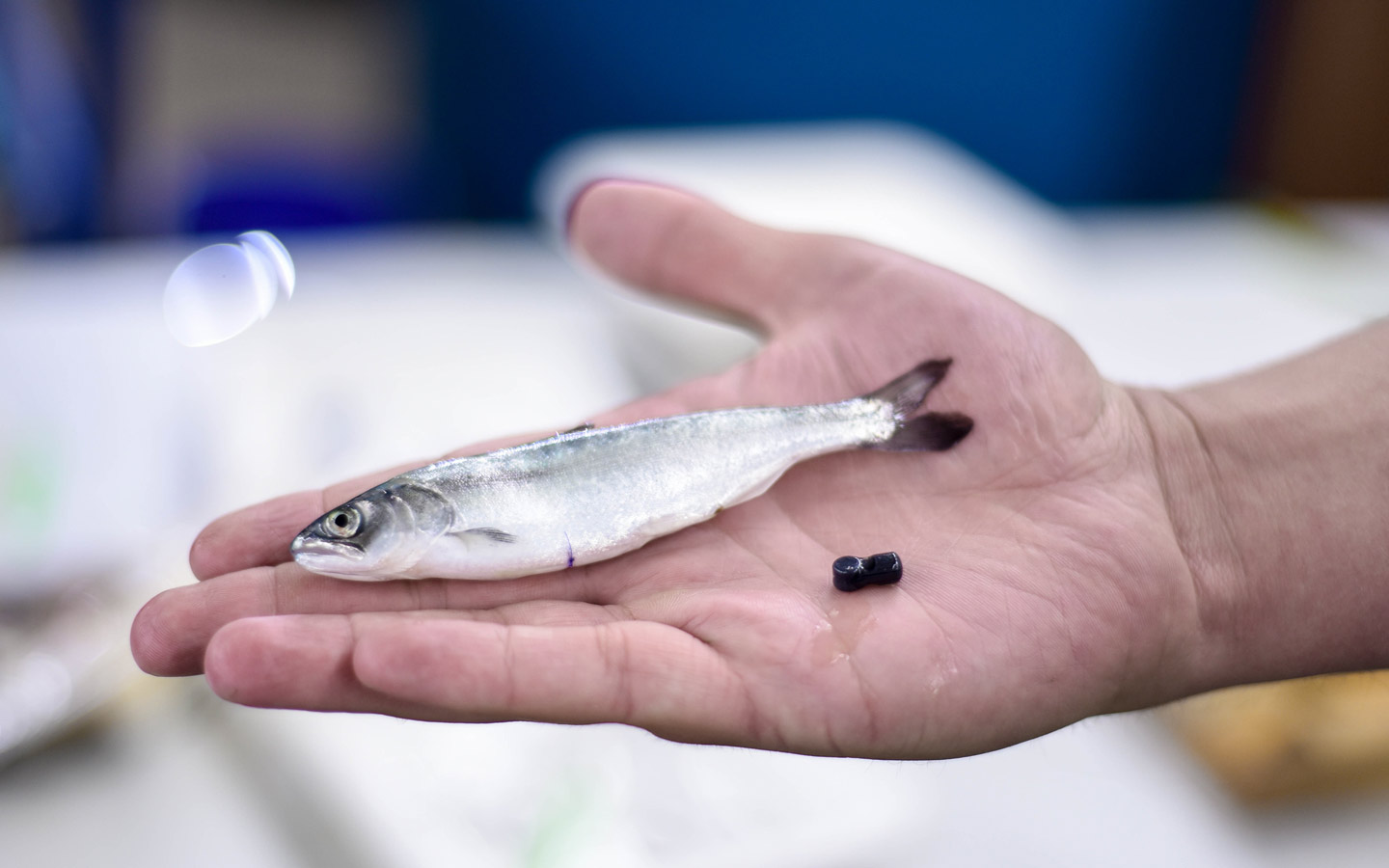For years, aquatic animal researchers could never be sure if their detections were coming from the animal they tagged or from the stomach of a predator. To identify such predation events, they had to rely on indirect measures like acceleration or make subjective assessments of animal behavior.
Innovasea’s groundbreaking predation tags helps eliminate guesswork and enables you to further explore novel questions while increasing the certainty with which you can interpret animal behavior.
How Predation Tags Work


The transmitted data output from the V5D, V7D and V9D predation tags is the time since the tag was triggered.

The V3D predation tag instead changes its ID code upon the tag triggering.
How Predation Tags Can Be Used
Validate Mark Recapture Survival Models
The mark-recapture technique uses random sampling to estimate mortality within a population where it is impractical to count every individual. Detection data from predation tags can be used to validate and strengthen models.
Separate Predation Mortality from Other Types of Mortality
Natural mortality is the removal of fish from the stock due to causes other than fishing. Predation data can help scientists, resource managers and other decision makers determine the effectiveness of restocking and remediation programs. View Case Study: Tracking Salmon Smolts
Investigate Impacts of Invasive Species
Invasive species can cause extinction of native animals, reduce biodiversity, compete for limited resources and alter habitats. Predation tags help paint a clearer picture of the impact of an invasive species within a particular ecosystem.
Study Trophic Energy Transfer
The complex trophic structure that maintains balance between organisms is patterned on the feeding relationships between organisms within an ecosystem. Predation tags allow researchers to gain insight into how energy is being transferred between trophic levels.
Understand Predator/Prey Behavior
Predation tags can provide greater insight into dominance, prey selection, genetic characteristics, population dynamics, water quality and other factors that have an impact on predation success.
How Researchers Are Using Predation Tags
Identification of predation events in wild fish using novel acoustic transmitters
Amy A. Weinz, Jordan K. Matley, Natalie V. Klinard, Aaron T. Fisk and Scott F. Colborne
Jason Daniels, Stephen Sutton, Dale Webber and Jonathan Carr
Daniela Notte, Robert J. Lennox, David C. Hardie and Glenn T. Crossin
Three Quick Questions About Fish Predation and Survival
Predators can cause major headaches for researchers studying fish behavior. Innovasea biologist Dale Webber discusses some of the challenges and outlines the best way to deal with them.

Interested in Predation Tags?
Contact Innovasea today to find out how our fish tracking experts can help with your next project.

